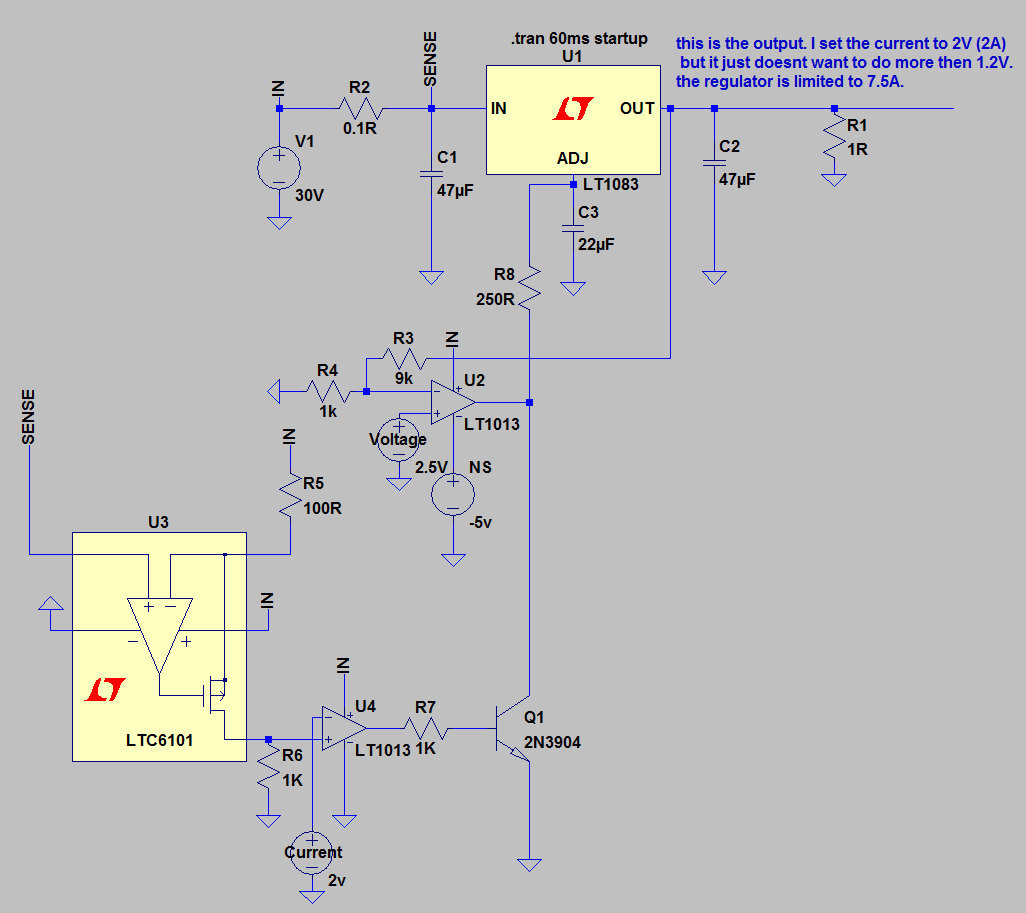xReM1x
Member level 5
hi, I'm desiging a power supply and there is what I have for start :

the problem is that the current limit shors the adj to ground and that makes the regulator go down to 1.2V instand of 0V. I cant use a constant voltage negative supply instand of ground because this voltage always need to be adjusted acording to the load.
so I taught about an op amp that constanly adjust the negative supply to make the set current = to the output current.
my question is how do I do that?

the problem is that the current limit shors the adj to ground and that makes the regulator go down to 1.2V instand of 0V. I cant use a constant voltage negative supply instand of ground because this voltage always need to be adjusted acording to the load.
so I taught about an op amp that constanly adjust the negative supply to make the set current = to the output current.
my question is how do I do that?
